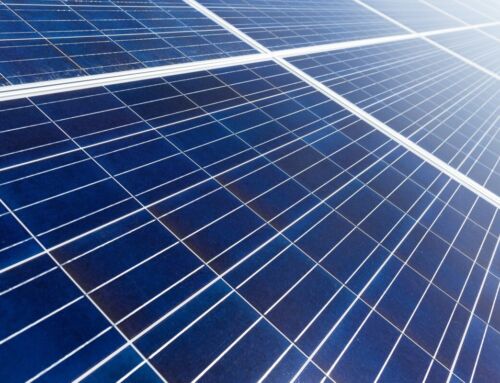Solar energy has revolutionized the way we think about power and sustainability. As the interest and need for clean and renewable energy sources increases, understanding the various solar energy types becomes crucial. This article delves into the different solar energy types, the technology behind solar panels, and their applications. Whether you are a homeowner, a business owner, or an energy enthusiast, this comprehensive guide will provide you with valuable insights into the world of solar power.
What is Solar Energy?
Solar energy is the energy received in the form of light and heat from the sun harnessed using various technologies, such as solar panels, solar thermal systems, and solar power plants. It is a renewable and perpetual source of energy, making it a sustainable and realistic alternative to fossil fuels.
The Major Solar Energy Types
Three primary solar energy types exist: Photovoltaic (PV), Concentrated Solar Power (CSP), and Solar Thermal. Each technology captures and converts solar energy into usable forms, such as electricity or heat, in different ways.
Photovoltaic (PV) Solar Energy
Photovoltaic Solar Panels: These are the most common of the solar energy types. They convert sunlight directly into electricity using semiconductor materials, typically silicon. When sunlight reaches the solar panels, it causes the electrons to excite with energy in the semiconductor material, generating an electric current. This process is known as the photovoltaic effect.
- Monocrystalline Solar Panels: They are comprised of a single crystal structure and are highly efficient and space-efficient. They are ideal for residential uses and commercial purposes in places where space is limited.
- Polycrystalline Solar Panels: These panels are made using multiple crystal structures and have slightly less efficiency than monocrystalline panels. However, these are more affordable, making them popular for larger installations.
- Thin-film solar Panels: These panels are made by placing one or more layers of photovoltaic material onto a substrate. They are lightweight and flexible, suitable for unique applications such as building-integrated photovoltaics and portable solar devices.
Concentrated Solar Power (CSP)
Concentrated Solar Power systems use lenses to concentrate sunlight onto a small surface area, typically a receiver. The concentrated sunlight heats a fluid, which then generates steam that drives a turbine and produces electricity. CSP systems are primarily used in large-scale power plants and are most effective in areas with high direct sunlight.
- Parabolic Trough Systems: These use curved mirrors to focus sunlight onto a tube filled with heat-transfer fluid. The heated fluid then generates steam, which drives a turbine to produce electricity.
- Solar Power Towers: These systems use a large field of mirrors to focus the sunlight onto a receiver placed on the center of the top of a tower. The concentrated heat is used to produce steam and generate electricity.
- Dish Stirling Systems: These use a parabolic dish to focus sunlight onto a wide area receiver, which heats a working fluid. The heated fluid drives a Stirling engine, generating electricity.
Solar Thermal Energy
Solar Thermal Energy systems capture and utilize the sun’s heat for various applications, such as water heating, space heating, and industrial processes. Based on their temperature range, these systems are typically categorized into three solar energy types: low-temperature, medium-temperature, and high-temperature solar thermal systems.
- Low-Temperature Solar Thermal Systems: These are used to heat water or air in residential and commercial buildings. Examples include solar water heaters and solar space heaters.
- Medium-Temperature Solar Thermal Systems: These are used for industrial processes that require moderate heat, such as food processing and chemical production.
- High-Temperature Solar Thermal Systems: These are used in power generation and industrial processes that require high temperatures. CSP systems fall into this category.
Benefits of Solar Energy
Solar energy offers numerous benefits, making it an attractive option for individuals, businesses, and governments.
- Renewable and Sustainable: Solar energy is an easily-available and renewable resource. And unlike fossil fuels, which are finite and contribute to environmental degradation, solar power is sustainable and eco-friendly.
- Reduces Electricity Bills: You can significantly reduce your electricity bills by generating electricity on your own from your solar panels. In some cases, you may even be able to sell the excess unconsumed electricity back to the grid.
- Low Maintenance Costs: Solar panels usually require minimal maintenance. Once installed, they can last for 25-30 years with little upkeep, making them a cost-effective energy solution.
- Environmentally Friendly: Solar energy systems produce no greenhouse gas emissions during operation, reducing your carbon footprint and contributing to a cleaner environment.
- Energy Independence: By generating electricity on your own, you become less reliant on the grid and fossil fuels, enhancing your energy security and independence.
Applications of Solar Energy
Solar energy has a multitude of applications, ranging from use for home appliances, residential and commercial to industrial and agricultural sectors.
- Residential Solar Power: Homeowners have the option to install solar panels on their property in order to generate electricity, which helps reduce their dependence on the power grid and deduct their energy bills. Solar water heaters are also popular residential applications.
- Commercial Solar Power: Businesses can use solar energy to power their operations, reduce energy costs, and demonstrate their commitment to sustainability. Solar panels can be installed anywhere with space on the property, like rooftops, parking structures, and open spaces.
- Industrial Solar Power: Industries can utilize solar energy for various processes, such as water heating, steam generation, and chemical production. CSP systems are particularly suited for large-scale industrial applications.
- Agricultural Solar Power: Farmers can use solar energy to power irrigation systems, greenhouses, and other agricultural equipment. Solar-powered water pumps and solar dryers are common agricultural applications.
NewSolarQuotes.com: Your Partner in Solar Energy
At NewSolarQuotes.com, we are dedicated to helping customers harness the power of the sun by providing comprehensive solar panel solutions. Our aim is to make solar energy easily accessible and affordable for everyone. Whether you are looking to install solar panels for your home, business, or industrial facility, we offer expert and personalized advice, high-quality products, and professional installation services.
We understand that every customer’s unique energy needs, which is why we offer personalized solar energy solutions tailored to your specific requirements. Our team is ready and will assist you along the entire process, from initial consultation to installation and maintenance. With NewSolarQuotes.com and our resources, you can be confident that you are investing wisely in a sustainable future.
Future of Solar Energy
The future of solar energy is bright, with ongoing advancements in technology and increasing its adoption worldwide. Emerging trends and innovations in the solar industry include:
- Solar Energy Storage: Advances in batteries and related technology are making it easier and more affordable to store excess solar energy for use during cloudy days or at night. This enhances the reliability and stability of solar power systems.
- Building-Integrated Photovoltaics (BIPV): BIPV involves incorporating solar panels directly into parts of the building, such as windows, roofs, and facades. This approach generates electricity and enhances the aesthetic appeal of buildings.
- Solar-Powered Transportation: Solar energy is being used to power electric vehicles, charging stations, and even solar-powered airplanes. This trend is expected to reduce our reliance on fossil fuels for transportation.
- Floating Solar Farms: Floating solar farms, also known as floatovoltaics, involve installing solar panels on bodies of water. This innovative approach maximizes space utilization and reduces water evaporation.
Conclusion
Understanding the differences in the solar energy types is essential for making informed and planned decisions about harnessing this renewable resource. Photovoltaic, concentrated solar power, and solar thermal systems each offer unique benefits and applications, making solar energy a versatile and sustainable option for various sectors.
At NewSolarQuotes.com, we are committed to helping you navigate the world of solar energy and find the best solutions for your needs. By embracing solar power, you can reduce energy costs, minimize environmental adversities, and contribute to a more sustainable future.





